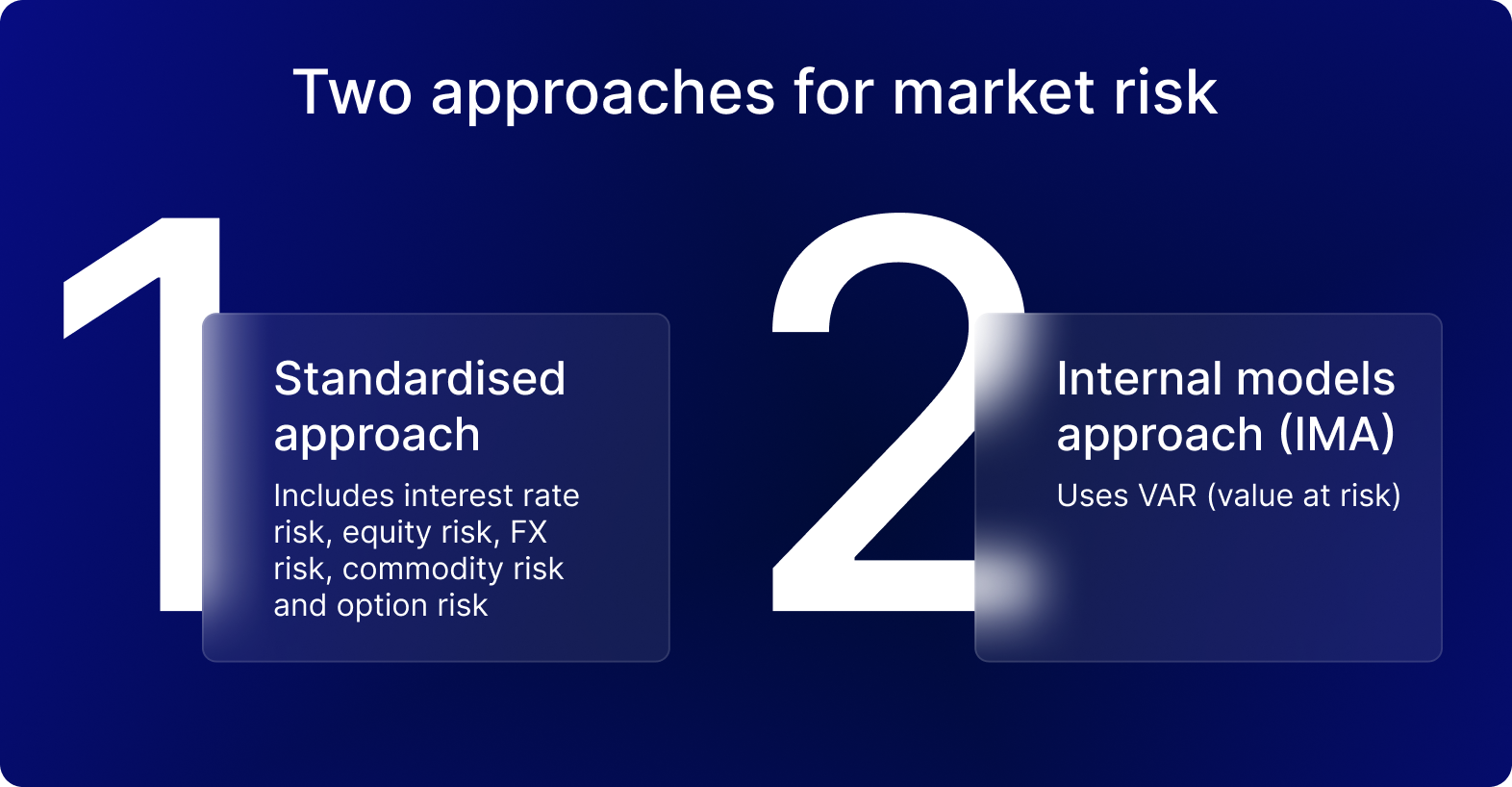Internal Model Approach: Method for Credit Risk Management


The Internal Model Method, also known as IMM or IMA (Internal Model Approach), is a sophisticated approach to measuring credit risk, offering banks a tailored and dynamic alternative to the traditional Standardized Approach. At its core, the IMM allows financial institutions to leverage their own internal data and risk models to calculate capital requirements for potential credit losses. This personalized approach acknowledges the risk profiles of individual banks and their portfolios, leading to a more accurate methodology for risk assessments and efficient capital allocation.
The use of internal models to calculate risk marks a significant shift from a one-size-fits-all approach to a more nuanced understanding of credit risk. Under Basel II, the Standardized Approach, with its reliance on external credit ratings, like the S&P, Fitch, and Moody’s, often resulted in a misrepresentation of the definition of risk for larger and more complex institutions. The Internal Model Method addressed this issue by empowering banks to utilize their own expertise and internal data to better measure risk and develop more sophisticated models. This ensures that banks have a more granular understanding of counterparty credit risk, considering factors like potential future exposure and specific portfolio characteristics, which mitigate unexpected losses.
Compared to the Standardized Approach, the Internal Model Approach offers several advantages:
It is noteworthy that implementing the IMM requires robust internal models, rigorous validation processes, and regulatory approval, demanding significant investment in resources and expertise. Despite these challenges, the ability to gain a more precise view of credit risk and optimize capital allocation makes the Internal Model Method a highly valuable tool for risk management.

The decision to adopt internal models for credit risk presents banks with a strategic choice that carries both potential benefits and regulatory obligations. One of the primary drivers for adopting internal models is the enhanced effectiveness it offers in risk assessment. Banks can use internal data to develop more sophisticated models, gain a deeper understanding of their credit risk exposure, and move towards a more efficient capital allocation than the Standardized Approach. The IMA allows for a deeper understanding of the specific risk drivers within the bank’s portfolio, promoting the development of more targeted and efficient mitigation strategies in risk-sensitive operations. This approach to proactive risk management leads to better financial stability and resilience.
However, the implementation of the IMA is not without its challenges. Banks must meet strict regulatory requirements to gain approval for using internal models. These requirements encompass robust model development and validation processes, ensuring the accuracy and reliability of risk estimates. Banks must demonstrate a strong risk management framework with effective internal controls and governance structures. Meeting these standards requires significant investments in technology, data infrastructure, and highly skilled personnel. Besides that, the capital implications of the IMM can be complex, as capital requirements are directly linked to the outputs of internal models used by banks. This requires ongoing monitoring and adjustments to ensure adequate capital buffers are maintained.
Despite the complexities involved, the benefits of the IMA outweigh the challenges for many banks. The ability to optimize capital allocation, gain deeper insights into risk, and enhance risk-management practices can lead to a competitive advantage in global financial markets.

Transitioning from the Standardized Approach to the Internal Model Method for measuring market risk is a complex process that requires careful planning and execution. The following steps provide a roadmap for banks embarking on this journey:
1. Model Development and Validation: The cornerstone of the IMM lies in developing robust and reliable internal models that accurately capture the bank’s market risk exposure. This involves selecting appropriate risk factors, choosing suitable model specifications (i.e., Value at Risk models—VaR), and conducting rigorous backtesting and stress testing to ensure the model’s effectiveness.
2. Regulatory Approval: Once the internal models are developed and validated, banks must seek approval from their respective regulatory authorities. This involves demonstrating compliance with regulatory requirements, including model governance, risk management framework, and internal controls.
3. Data Infrastructure and Technology: Implementing the IMM requires a robust data infrastructure to ensure the timely and accurate data flow into the models. Banks may need to invest in more robust technologies and data management systems to support the increased data demands of the internal models used by the bank.
4. Skilled Personnel: Successful implementation of the IMM requires a team of highly skilled professionals with expertise in quantitative finance, risk modeling, and regulatory compliance. Banks must invest in training and recruitment to build the necessary capabilities.
Implementing internal models presents several challenges, including:
How Does IMM Differ From Other Credit Risk Management Models?
IMM distinguishes itself from other credit risk management models primarily through its tailored approach and focus on internal data that banks can use to calculate relevant indicators and measure risk. Unlike standardized models that rely on external credit ratings and pre-defined risk weights, the IMM allows banks to develop their own models based on their unique portfolio characteristics and profiles. This methodology enables a more effective risk assessment, leading to more efficient capital allocation. Additionally, the IMM offers an in-depth understanding of risk drivers within the bank’s portfolio, allowing for proactive risk mitigation strategies. While other credit risk models may provide valuable insights, internal models offer a more customized approach to managing credit risk.
What Are the Common Pitfalls in Applying the IMM and How Can They Be Avoided?
Several pitfalls can arise when applying the IMM, but they can be mitigated through meticulous planning and execution:
By proactively addressing these pitfalls, banks can successfully implement and utilize the Internal Model Approach to enhance their credit risk management and achieve a competitive advantage in the banking system.